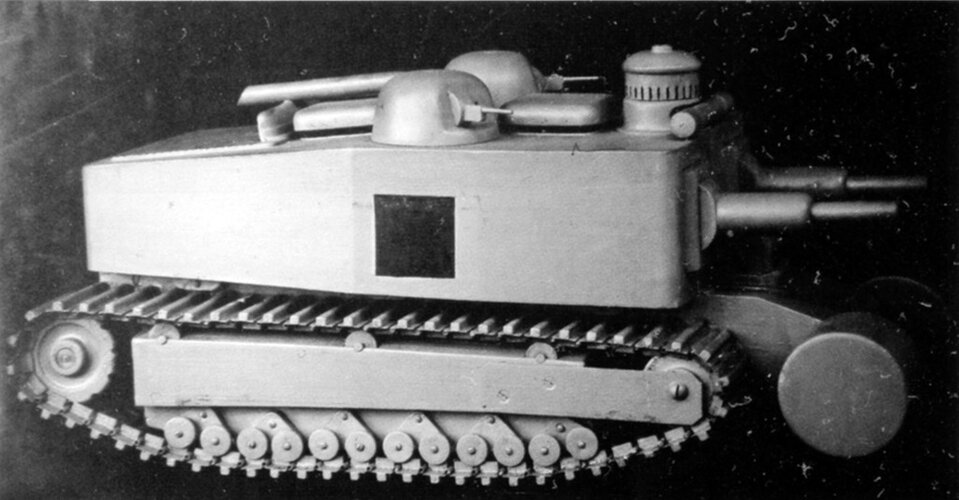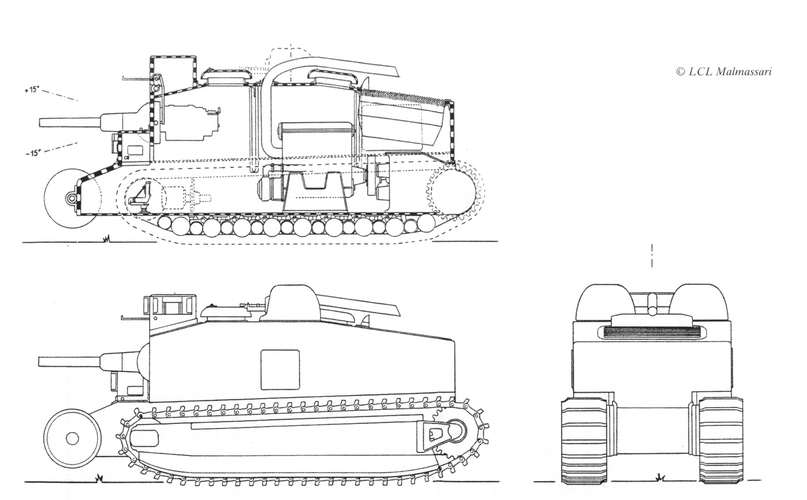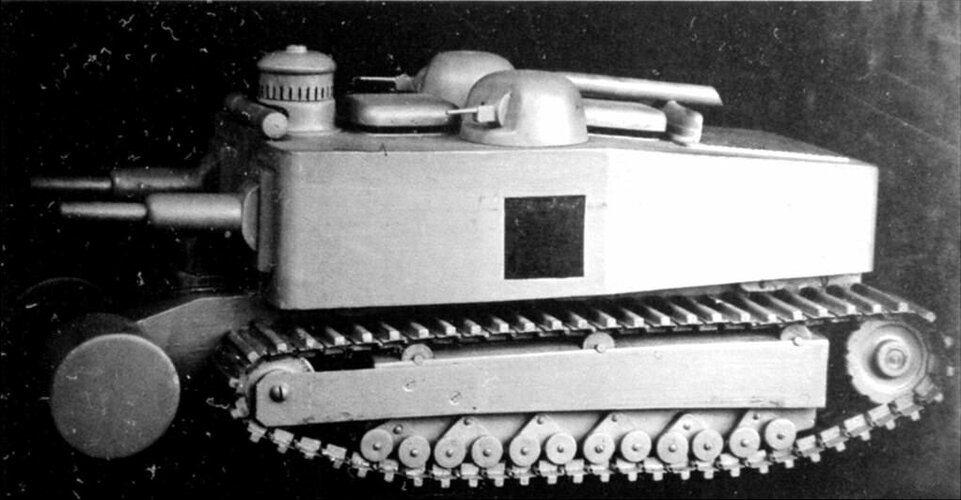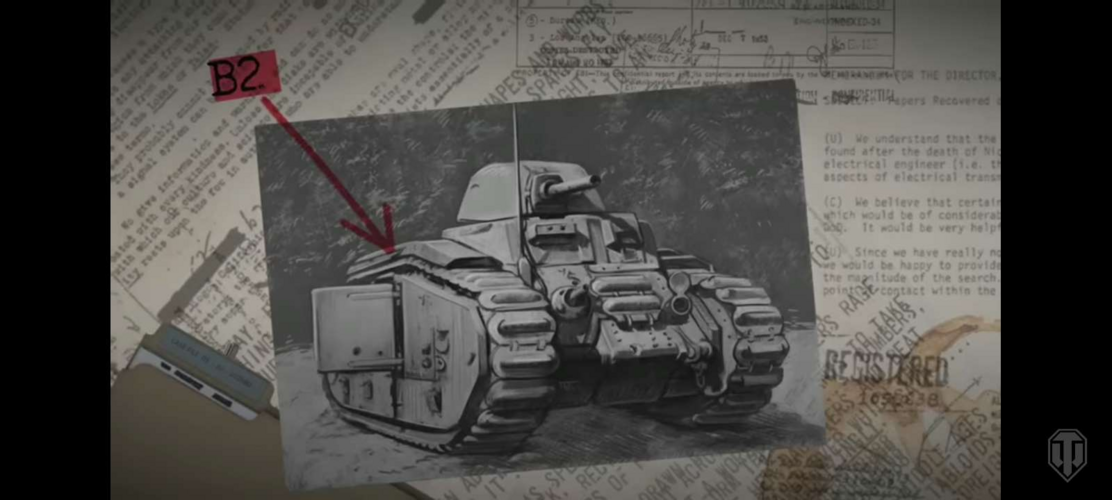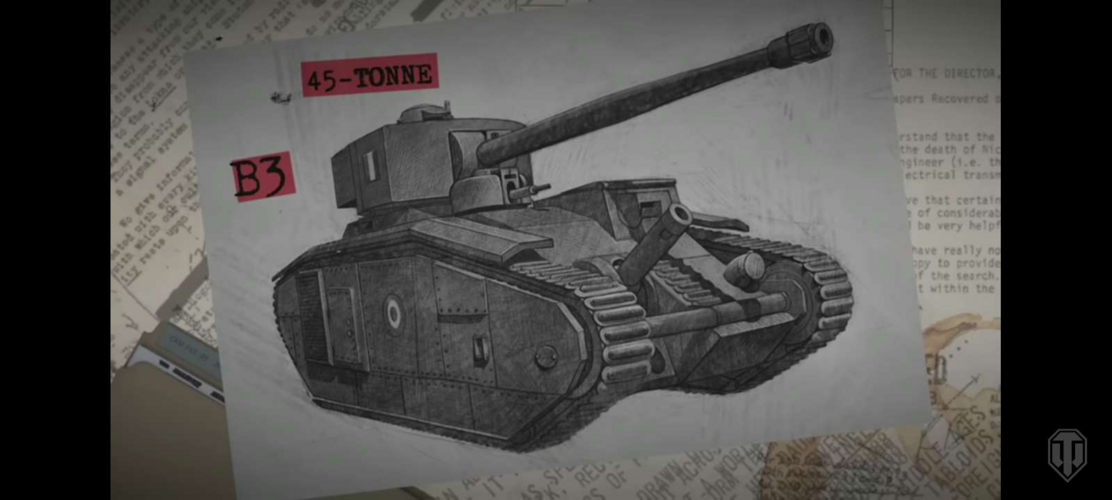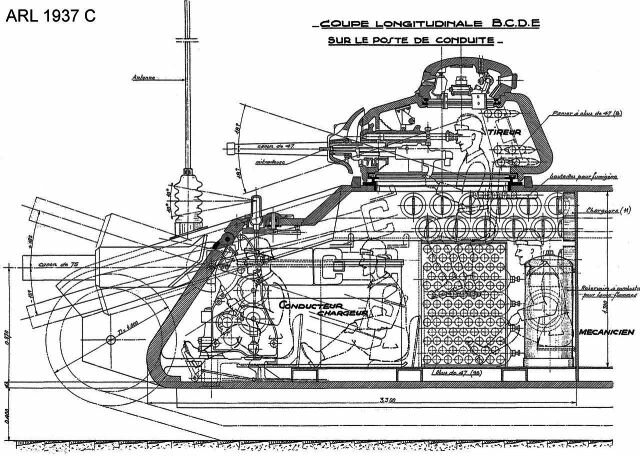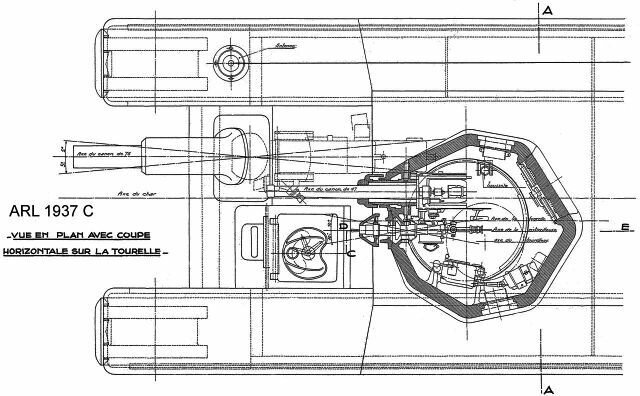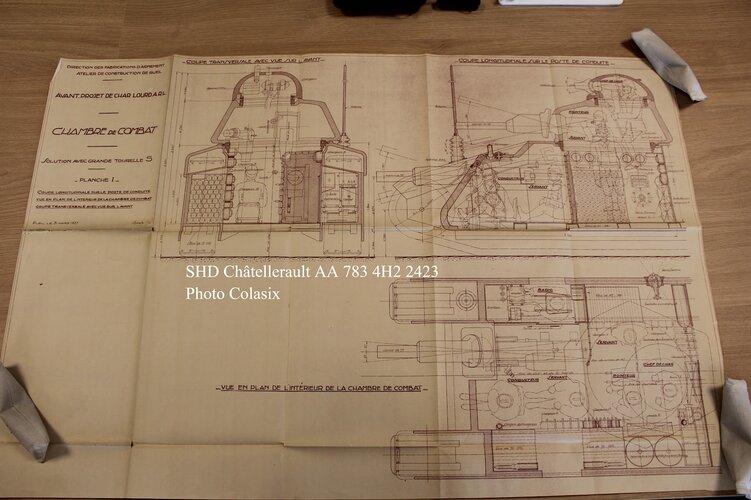Elan Vital
ACCESS: Secret
- Joined
- 6 September 2019
- Messages
- 306
- Reaction score
- 673
Hi everyone,
As previous threads on French interwar-1940 vehicles, I am creating a new one centered on unbuilt Char B projects. This will deal with pretty obscure vehicles, which we presently have few or no illustrations of.
B2, B3 and BB:
It is possible to go all the way back to October 28, 1930. At the time, a committee was formed to determine the characteristics of a new battle tank while the Char B1 prototypes were being tested. On February 4th 1931, a first series of propositions was delivered by General Inspector of Tanks BEZU. along with the minutes of the 4 first meetings. These propositions were approved on April 11, 1931, and the Technical Section of Tanks was tasked with providing an early draft conforming to the desires expressed by the committee.
On February 3rd 1932, the minutes for meetings 5 and 6 of the committee and their conlusions following study of the early drafts were sent. The characteristics of thsi new B2 battle tank are as follows:
Armament:
- casemated 75mm gun with a muzzle velocity of 570 m/s (mle.1897 ballistics) and 12° horizontal traverse arc (as opposed to no traverse on the B1)
- the turret of the Char B1 (the ST2 at the time) armed with a 47mm SA 34 with a muzzle velocity of 490 m/s (a converted naval gun) and a machinegun (7.5mm MAC 31 most likely).
- One fixed machinegun on the front
Speed: 30 kph
Armor:
- 50mm at the front
- 40mm for other vertical parts
- 20mm for horizontal parts (roof and floor)
Weight: 35 tonnes (the maximum easily compatible with road and rail transport although there was leeway for 40-45 tonnes in cases).
This tank, for a weight increase of 9 tonnes, is sufficiently superior to the B1 in armament, speed and armor to be viable to build.
The commitee, estimating that the armament and armor may lead to exceeding the limit of 35 tonnes, denotes the great interest it has in two more powerful vehicles, the B3 and BB and suggests their realisation.
The B3 would weigh 45 tonnes and carries a 47mm gun with great perforating power. The study would have to particularly focus on handling of the machinegun and command inside the tank, showing that the French were aware of the command problems if such a large gun was operated by the lone commander.
The BB is a project put forward by Général Estienne, which weighs 50 tonnes and features:
- a very powerful armament: 2 75mm with mle.97 ballistics and a traverse angle of 500 to 1000 mills, one of which can be swapped for a high perforation 47mm gun; and two machineguns in two turrets;
- a speed of 25 kph
- Armor of 60mm at the front and 50mm on other vertical plates
Moreover, command and observation inside this tank shall be ensured in the best conditions. This was, in effect, the last proposal (considerably lighter and more reasonable than previous proposals) from Estienne for a "Char d'Arrêt", a very powerful tank able to stop enemy armored attacks, including in the gaps between Maginot Line bunkers.
Estienne felt that once a BB tank was deemed ready, all funds for tanks should be focused exclusively on this type of tank. BEZU understandably disagreed as no tank could be expected to perform all missions (he particularly recommended a fast, low recon tank that is easy to conceal).
Until these battle tanks were developped, it is understood that a number of improved B1 tanks would be built.
On October 1934, the 12th Direction (Direction of Armament Fabrications or DFA) recalled the summary characteristics of these tanks:
B2: 40mm of armour, casemated 75mm mle.1929 (fortress gun), Char B1 turret (now likely the APX-1), instantaneous speed of 30kph at least, 32 to 35 tonnes.
A 400 PS engine from Lorraine was expected for this tank in the first trimester of 1935. A corresponding transmission was ordered from the Batignolles locomotive manufacturer. The suspension is being built by the APX but has been put in 2nd priority in favor of the study of the new light tank.
B3: 45mm, short 75mm of the B1, 47mm high velocity gun likely adapted from the 47mm AC 34 casemate gun for turret use.
25 kph instantaneous speed, 35 to 40 tonnes.
The study of the B3 is subordinated to that of the B2 which shares the same automotive components, and is merely an early draft to be further developped once the B2's study is sufficiently advanced.
Char BB: 50mm (60 at the front), 2 75mm mel. 1929 guns, 2 machinegun turrets.
Instantaneous speed: 45 tonnes.
The study has been reduced to the production of a full scale mockup. The FCM company completed the mockup which is currently at their facilities at La Seyne-sur-Mer.
By then, it was deemed that all these programs must be revised at least in terms of armor thickness, and that it would be interesting to fuse the B2 with the 2nd study envisionned per a letter from October 23rd, 1934. In fact, discussions in late 1934 would culminate with the cancellation of the B2, B3 and BB, and the search for a new tank which would carry "the optimum protection compatible with a weight of 35 tonnes with efficient shaping of the hull and track protection". Said armor was aimed at the 75mm mle.1897 field gun, a thickness of 100mm being deemed necessary, with the mobility of the B1 and a 75mm hull gun and a turret. The new Inspector of Tanks, Colonel Velpry, would enquire FCM about this. FCM would provide an early draft, while the Minister of War briefly blamed Velpry from allegedly going beyond his role.
All this would eventually lead to the 1936 program for a 45t heavy/fortification assault tank. In effect, the ARL entries into that program were spriritual successors to the B2 and B3, with the full power 75mm hull gun (now the "self-propelled" 75) with horizontal traverse, a 47mm high velocity gun turret for Variant S of this tank, but much heavier 100mm thick armor and (40-50mm thick roof/floor). However some loss in mobility compared to B1 was accepted. The B2 and B3 studies would also end up feeding development of the horizontal traverse mount for the B1 Ter, which was originally envisionned as yet another improved B1 while waiting for the B2.
Only the BB has an illustration, thanks to its mockup. The two guns, MG turrets are very noticeable, as well as a stroboscopic observation cupola (a means of obtaining good observation with very heavy protection at the time. It seems an optical rangefinder was placed in front. The vehicle features a large drum at the front which was a device meant to improve mobility in certain particularly tough terrain.


As previous threads on French interwar-1940 vehicles, I am creating a new one centered on unbuilt Char B projects. This will deal with pretty obscure vehicles, which we presently have few or no illustrations of.
B2, B3 and BB:
It is possible to go all the way back to October 28, 1930. At the time, a committee was formed to determine the characteristics of a new battle tank while the Char B1 prototypes were being tested. On February 4th 1931, a first series of propositions was delivered by General Inspector of Tanks BEZU. along with the minutes of the 4 first meetings. These propositions were approved on April 11, 1931, and the Technical Section of Tanks was tasked with providing an early draft conforming to the desires expressed by the committee.
On February 3rd 1932, the minutes for meetings 5 and 6 of the committee and their conlusions following study of the early drafts were sent. The characteristics of thsi new B2 battle tank are as follows:
Armament:
- casemated 75mm gun with a muzzle velocity of 570 m/s (mle.1897 ballistics) and 12° horizontal traverse arc (as opposed to no traverse on the B1)
- the turret of the Char B1 (the ST2 at the time) armed with a 47mm SA 34 with a muzzle velocity of 490 m/s (a converted naval gun) and a machinegun (7.5mm MAC 31 most likely).
- One fixed machinegun on the front
Speed: 30 kph
Armor:
- 50mm at the front
- 40mm for other vertical parts
- 20mm for horizontal parts (roof and floor)
Weight: 35 tonnes (the maximum easily compatible with road and rail transport although there was leeway for 40-45 tonnes in cases).
This tank, for a weight increase of 9 tonnes, is sufficiently superior to the B1 in armament, speed and armor to be viable to build.
The commitee, estimating that the armament and armor may lead to exceeding the limit of 35 tonnes, denotes the great interest it has in two more powerful vehicles, the B3 and BB and suggests their realisation.
The B3 would weigh 45 tonnes and carries a 47mm gun with great perforating power. The study would have to particularly focus on handling of the machinegun and command inside the tank, showing that the French were aware of the command problems if such a large gun was operated by the lone commander.
The BB is a project put forward by Général Estienne, which weighs 50 tonnes and features:
- a very powerful armament: 2 75mm with mle.97 ballistics and a traverse angle of 500 to 1000 mills, one of which can be swapped for a high perforation 47mm gun; and two machineguns in two turrets;
- a speed of 25 kph
- Armor of 60mm at the front and 50mm on other vertical plates
Moreover, command and observation inside this tank shall be ensured in the best conditions. This was, in effect, the last proposal (considerably lighter and more reasonable than previous proposals) from Estienne for a "Char d'Arrêt", a very powerful tank able to stop enemy armored attacks, including in the gaps between Maginot Line bunkers.
Estienne felt that once a BB tank was deemed ready, all funds for tanks should be focused exclusively on this type of tank. BEZU understandably disagreed as no tank could be expected to perform all missions (he particularly recommended a fast, low recon tank that is easy to conceal).
Until these battle tanks were developped, it is understood that a number of improved B1 tanks would be built.
On October 1934, the 12th Direction (Direction of Armament Fabrications or DFA) recalled the summary characteristics of these tanks:
B2: 40mm of armour, casemated 75mm mle.1929 (fortress gun), Char B1 turret (now likely the APX-1), instantaneous speed of 30kph at least, 32 to 35 tonnes.
A 400 PS engine from Lorraine was expected for this tank in the first trimester of 1935. A corresponding transmission was ordered from the Batignolles locomotive manufacturer. The suspension is being built by the APX but has been put in 2nd priority in favor of the study of the new light tank.
B3: 45mm, short 75mm of the B1, 47mm high velocity gun likely adapted from the 47mm AC 34 casemate gun for turret use.
25 kph instantaneous speed, 35 to 40 tonnes.
The study of the B3 is subordinated to that of the B2 which shares the same automotive components, and is merely an early draft to be further developped once the B2's study is sufficiently advanced.
Char BB: 50mm (60 at the front), 2 75mm mel. 1929 guns, 2 machinegun turrets.
Instantaneous speed: 45 tonnes.
The study has been reduced to the production of a full scale mockup. The FCM company completed the mockup which is currently at their facilities at La Seyne-sur-Mer.
By then, it was deemed that all these programs must be revised at least in terms of armor thickness, and that it would be interesting to fuse the B2 with the 2nd study envisionned per a letter from October 23rd, 1934. In fact, discussions in late 1934 would culminate with the cancellation of the B2, B3 and BB, and the search for a new tank which would carry "the optimum protection compatible with a weight of 35 tonnes with efficient shaping of the hull and track protection". Said armor was aimed at the 75mm mle.1897 field gun, a thickness of 100mm being deemed necessary, with the mobility of the B1 and a 75mm hull gun and a turret. The new Inspector of Tanks, Colonel Velpry, would enquire FCM about this. FCM would provide an early draft, while the Minister of War briefly blamed Velpry from allegedly going beyond his role.
All this would eventually lead to the 1936 program for a 45t heavy/fortification assault tank. In effect, the ARL entries into that program were spriritual successors to the B2 and B3, with the full power 75mm hull gun (now the "self-propelled" 75) with horizontal traverse, a 47mm high velocity gun turret for Variant S of this tank, but much heavier 100mm thick armor and (40-50mm thick roof/floor). However some loss in mobility compared to B1 was accepted. The B2 and B3 studies would also end up feeding development of the horizontal traverse mount for the B1 Ter, which was originally envisionned as yet another improved B1 while waiting for the B2.
Only the BB has an illustration, thanks to its mockup. The two guns, MG turrets are very noticeable, as well as a stroboscopic observation cupola (a means of obtaining good observation with very heavy protection at the time. It seems an optical rangefinder was placed in front. The vehicle features a large drum at the front which was a device meant to improve mobility in certain particularly tough terrain.
